Fruit trees are a great addition to any garden or orchard, but planting them at the wrong time can be detrimental to their growth and fruit production. This is especially true in Utah, where the climate can be challenging for certain types of fruit trees. Understanding the best time to plant fruit trees in Utah is crucial for a successful harvest.
Utah’s climate is characterized by cold winters and hot summers, with a wide range of temperatures throughout the year. This makes it important to choose the right type of fruit tree for the area and to plant it at the right time.
Factors such as soil type, sunlight exposure, and water availability also play a role in determining when to plant fruit trees in Utah.
Key Takeaways:
- Understanding Utah’s climate is crucial for planting fruit trees.
- The best time to plant fruit trees in Utah depends on several factors, including the type of tree, soil preparation, and sunlight exposure.
- Proper maintenance and pest management are essential for healthy fruit trees in Utah.
Also see:
- When to Plant Fruit Trees in Tennessee?
- When to Plant Grass Seed in Houston?
- When to Plant Food Plots in Texas?
Understanding Utah’s Climate
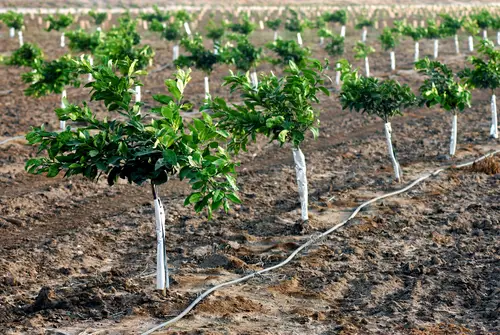
Utah’s climate is characterized by hot summers and cold winters. The state is known for its dry weather, with an average annual precipitation of only 12 inches. The amount of sunlight Utah receives varies depending on the season, with more hours of daylight during the summer months and less during the winter months.
When it comes to planting fruit trees in Utah, it is important to choose trees that are cold hardy and can withstand the state’s harsh winters. The average coldest temperature in Utah is around 0°F, so fruit trees that can survive in temperatures below this mark are ideal.
Utah’s high altitude can also affect fruit tree growth, as it can result in shorter growing seasons and lower atmospheric pressure. It is important to choose fruit trees that are adapted to Utah’s climate, such as apple, cherry, peach, and plum trees.
In addition to choosing the right type of fruit tree, it is also important to plant them at the right time. The best time to plant fruit trees in Utah is in the spring, after the last frost but before the heat of summer sets in. This allows the trees to establish their roots before the hot and dry summer months.
When to Plant Fruit Trees in Utah
When it comes to planting fruit trees in Utah, timing is everything. The best time to plant fruit trees in Utah is during the dormant season, which is generally from late fall to early spring. During this time, the tree is not actively growing, which means that it will experience less shock when it is transplanted.
Planting fruit trees in the spring is also an option, but it is important to wait until the soil has warmed up and dried out enough to work with. Planting too early in the spring can lead to root rot and other issues.
It is generally not recommended to plant fruit trees in the summer, as the hot and dry conditions can make it difficult for the tree to establish itself.
When planting fruit trees in Utah, it is important to consider the climate and growing conditions in your area. Some areas may have shorter growing seasons or lower atmospheric pressure due to the high altitude, which can affect fruit tree growth.
Here are some general guidelines for planting fruit trees in Utah:
- Plant during the dormant season (late fall to early spring)
- Wait until the soil has warmed up and dried out in the spring before planting
- Avoid planting in the summer
- Consider the climate and growing conditions in your area
By following these guidelines and planting at the right time, you can help ensure that your fruit tree will thrive in Utah’s unique climate and growing conditions.
Types of Fruit Trees Suitable for Utah

Utah’s climate is generally dry, with hot summers and cold winters. However, there are many fruit trees that can thrive in Utah’s conditions. Here are some of the best fruit trees to grow in Utah:
1. Apple Trees
Apple trees are a popular choice for Utah gardens. They are cold-hardy and can tolerate Utah’s harsh winters. Some popular apple varieties that grow well in Utah include Honeycrisp, Red Delicious, and Granny Smith.
2. Peach Trees
Peach trees are another great option for Utah gardens. They prefer the warm, dry climate and can produce sweet, juicy fruit. Some popular peach varieties that grow well in Utah include Reliance, Contender, and J.H. Hale.
3. Pear Trees
Pear trees are also well-suited for Utah’s climate. They prefer cooler temperatures and can tolerate Utah’s cold winters. Some popular pear varieties that grow well in Utah include Anjou and Bartlett.
4. Cherry Trees
Cherry trees can also thrive in Utah’s climate. They prefer cooler temperatures and can produce delicious fruit. Some popular cherry varieties that grow well in Utah include Bing, Montmorency, and Rainier.
5. Plum Trees
Plum trees are another fruit tree that can grow well in Utah. They prefer well-drained soil and can tolerate Utah’s hot summers and cold winters. Some popular plum varieties that grow well in Utah include Damson and Japanese.
6. Apricot Trees
Apricot trees can also thrive in Utah’s climate. They prefer well-drained soil and can produce sweet, juicy fruit. Some popular apricot varieties that grow well in Utah include Goldcot and Moorpark.
7. Fig Trees
Fig trees can also grow well in Utah’s climate, but they require a bit more care than other fruit trees. They prefer well-drained soil and need to be protected from the cold during the winter months. Some popular fig varieties that grow well in Utah include Brown Turkey and Black Mission.
When choosing fruit trees to plant in Utah, it’s important to consider the tree’s cold hardiness and its ability to tolerate Utah’s dry climate. With the right care and attention, these fruit trees can produce delicious fruit for years to come.
Understanding the Importance of Sunlight
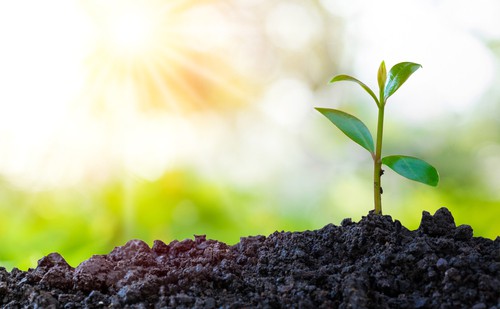
When it comes to planting fruit trees in Utah, understanding the importance of sunlight is crucial. Fruit trees require a significant amount of sunlight to grow and produce fruit. Without adequate sunlight, fruit trees may struggle to grow, produce fewer fruits, or die altogether.
Sunlight is essential for photosynthesis, the process by which plants create energy from sunlight, water, and carbon dioxide. Fruit trees that receive enough sunlight will have more energy to grow and produce fruit.
In Utah, fruit trees should be planted in areas that receive at least six hours of direct sunlight each day. Fruit trees that do not receive enough sunlight may produce smaller or fewer fruits, and may also be more susceptible to pests and diseases.
It’s also important to consider the direction of sunlight when planting fruit trees. Fruit trees should be planted in areas that receive sunlight from the south or west, as these areas typically receive the most sunlight throughout the day.
In addition to providing enough sunlight, it’s important to protect fruit trees from excessive sunlight and heat. Fruit trees can become damaged or stressed if they receive too much sunlight or heat, especially during hot summer months.
To protect fruit trees from excessive heat, consider planting them in areas that receive partial shade during the hottest parts of the day, or provide shade with a tree canopy or shade cloth.
Soil Preparation for Planting
Before planting fruit trees in Utah, it is important to prepare the soil properly to ensure the trees have the best chance of growing successfully. The following steps can help ensure the soil is properly prepared:
1. Soil Testing
The first step in preparing the soil is to test it to determine its pH level and nutrient content. Utah State University Extension recommends testing the soil every three to four years to ensure it has the proper pH level and nutrient content for the fruit trees being planted.
2. Soil pH
The ideal pH level for fruit trees in Utah is between 6.0 and 7.0. If the pH level is too low, adding lime can help raise it. If the pH level is too high, adding sulfur can help lower it.
3. Nutrient Content

Fruit trees in Utah require adequate levels of phosphorus and potassium to grow properly. If the soil test shows that these nutrients are lacking, adding a fertilizer that is high in these nutrients can help. It is important to follow the fertilizer instructions carefully to avoid over-fertilizing, which can damage the trees.
4. Organic Matter
Adding organic matter to the soil can help improve its texture and fertility. Well-rotted manure or compost can be added to the soil to increase its organic matter content. When adding organic matter, it is important to mix it thoroughly with the soil.
5. Backfill
When planting fruit trees, it is important to backfill the hole with soil that has been amended with organic matter and fertilizer. This will help ensure the tree has the proper nutrients and soil structure to grow properly. After backfilling, it is important to water the tree thoroughly to help settle the soil around the roots.
By properly preparing the soil before planting fruit trees in Utah, gardeners can help ensure their trees have the best chance of growing successfully.
Planting Process
Planting fruit trees in Utah requires careful attention to detail to ensure a healthy and productive tree. The following steps should be taken to ensure a successful planting process:
Step 1: Choose the Right Time
The best time to plant fruit trees in Utah is in the spring, after the last frost date. This allows the tree to establish its root system before the hot summer months. However, fall planting can also be successful if done early enough in the season.
Step 2: Choose the Right Tree
When selecting a fruit tree, it’s important to consider the rootstock and the root system. The rootstock will determine the size of the tree, while the root system will determine its ability to absorb water and nutrients. It’s also important to choose a tree that is adapted to Utah’s climate, such as apple, cherry, peach, plum, and pear trees.
Step 3: Prepare the Soil
The soil should be well-drained and have a pH of 6.0 to 7.5. The hole should be dug twice as wide as the root ball and just deep enough so that the graft union is slightly above the soil line. The soil should be amended with compost or other organic matter to improve soil structure and fertility.
Step 4: Plant the Tree
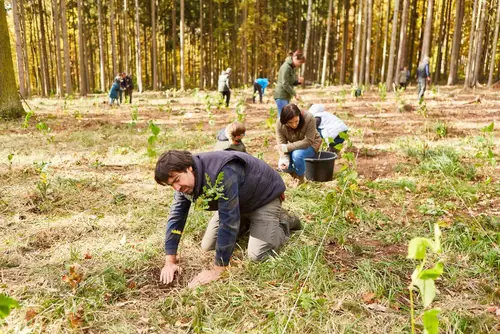
The tree should be placed in the hole and the roots should be spread out evenly. The hole should then be backfilled with soil, making sure to eliminate any air pockets. The tree should be watered thoroughly to settle the soil and ensure good root-to-soil contact.
Step 5: Stake the Tree
If the tree is tall or in a windy area, it may need to be staked for support. The stake should be placed on the side of the tree opposite the prevailing winds and secured to the tree with a soft tie. The stake should be removed after one year to prevent damage to the trunk.
Step 6: Spacing and Watering
Fruit trees should be spaced according to their mature size to ensure adequate sunlight and air circulation. The spacing will depend on the tree’s rootstock and variety. Watering should be done regularly, especially during the first few years to help establish a strong root system.
Soil moisture should be monitored to prevent over or under watering. By following these steps, planting fruit trees in Utah can be a rewarding experience that will provide fresh fruit for years to come.
Maintaining Healthy Fruit Trees
Maintaining healthy fruit trees is essential for getting a good harvest. Here are a few tips to help keep your fruit trees healthy:
1. Mulching
Mulching around the base of fruit trees helps to retain moisture in the soil, prevent weed growth, and regulate soil temperature. It is recommended to use organic mulch like wood chips, straw, or leaves. Avoid piling mulch against the tree trunk as it can cause rotting.
2. Pruning
Pruning fruit trees helps to remove dead or diseased wood, promote new growth, and shape the tree for better fruit production. It is recommended to prune fruit trees during the dormant season, which is usually in late winter or early spring.
3. Watering
Fruit trees need regular watering, especially during the hot summer months. It is recommended to water deeply and infrequently rather than shallowly and frequently. A good rule of thumb is to water fruit trees once a week during the growing season. However, be careful not to overwater as it can cause root rot.
4. Weed Growth
Weed growth around the base of fruit trees can compete with the tree for nutrients and water. It is recommended to remove weeds manually or use a weed barrier like landscape fabric. Avoid using herbicides as they can harm the tree.
By following these tips, you can maintain healthy fruit trees and get a good harvest.
Understanding and Managing Pests and Diseases

When planting fruit trees in Utah, it is important to understand and manage pests and diseases to ensure a healthy and fruitful harvest. Pests and diseases can cause significant damage to fruit trees, reducing crop yields and affecting the quality of the fruit.
Common Pests and Diseases
Some of the most common pests that affect fruit trees in Utah include aphids, mites, codling moths, and spider mites. These pests can cause damage to the fruit, leaves, and branches of the tree. In addition, fruit trees are susceptible to a variety of diseases, including fire blight, apple scab, and powdery mildew.
Pest and Disease Management
To manage pests and diseases in fruit trees, it is important to take a proactive approach. This includes monitoring the trees regularly for signs of damage or infestation and taking appropriate action when necessary. Some common methods of pest and disease management include:
- Pruning: Regular pruning can help to remove diseased or damaged branches and improve air circulation around the tree, reducing the risk of disease.
- Fertilization: Proper fertilization can help to promote healthy growth and improve the tree’s resistance to pests and diseases. However, over-fertilization can lead to iron chlorosis, a condition in which the leaves turn yellow due to a lack of iron.
- Pest control: There are a variety of methods for controlling pests, including the use of insecticides, natural predators, and physical barriers such as netting or sticky traps.
- Disease control: Fungicides and bactericides can be used to control diseases, but it is important to choose the right product for the specific disease and follow the label instructions carefully.
Harvesting and Utilization
Once the fruit trees have matured and produced fruit, it’s time to harvest and utilize the bounty. Fruit crops in Utah typically ripen in mid-summer, with each type of fruit having its own ripening time. It’s important to pay attention to the ripening time so that you can harvest the fruit at the optimal time for flavor and texture.
When it comes to harvesting fruit, it’s important to handle the fruit gently to prevent damage. Bruised or damaged fruit can spoil quickly and attract pests. Use a ladder or fruit picker to reach high branches, and gently twist the fruit to remove it from the tree.
Once the fruit is harvested, it can be used in a variety of ways. Home canning is a popular way to preserve fruit for later use. It’s important to follow safe canning practices to prevent the growth of harmful bacteria. The Utah State University Extension provides information on safe home canning practices.
Fruit can also be eaten fresh or used in a variety of recipes. Some popular uses for fruit include pies, jams, and fruit salads. It’s important to store fruit properly to prevent spoilage. Most fruit can be stored in the refrigerator for a few days, while some types of fruit can be stored at room temperature.
In terms of production, fruit trees in Utah require proper care and maintenance to ensure a healthy and productive crop. This includes proper pruning, irrigation, and fertilization. It’s important to choose fruit trees that are adapted to Utah’s climate to ensure the best chance of success.
Buying Fruit Trees in Utah
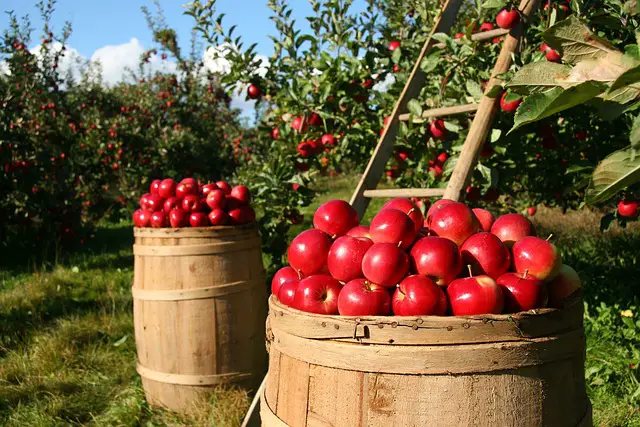
When it comes to buying fruit trees in Utah, there are a few things to consider. Local nurseries are a great place to start, as they often carry fruit trees that are well-suited to the local climate. Bountiful and Roy are two cities in Utah that have several nurseries that offer a wide variety of fruit trees.
Another consideration is whether to purchase bare root trees or potted trees. Bare root trees are typically less expensive and easier to transport, but they require more care and attention during planting. Potted trees are more expensive, but they are easier to plant and typically have a higher survival rate.
Homeowners should also consider the size and age of the tree they want to purchase. Younger trees are typically less expensive, but they may take longer to produce fruit. Older trees may be more expensive, but they may produce fruit sooner.
It is important to choose fruit trees that are adapted to Utah’s climate. Apple, cherry, peach, and plum trees are all popular fruit trees that grow well in Utah. When selecting a fruit tree, it is important to choose a variety that is well-suited to the local climate.
Additional Considerations
When planting fruit trees in Utah, there are a few additional considerations to keep in mind. These factors can affect the growth, productivity, and health of your fruit trees.
1. Cold Hardiness
Utah’s climate can be challenging for fruit trees, especially during the winter months. Therefore, it’s essential to choose cold-hardy cultivars that can withstand the cold temperatures. Some of the most cold-hardy fruit trees for Utah include apple, cherry, peach, plum, and pear trees.
2. Tree Size
Another consideration when planting fruit trees is the size of the tree at maturity. Some fruit trees, like apple and peach trees, can grow quite large, while others, like cherry and plum trees, tend to stay smaller. It’s important to consider the space available for planting and choose trees that fit the area.
3. Cross-Pollination
Many fruit trees require cross-pollination to produce fruit. This means that you need to plant two or more different cultivars of the same fruit tree species to ensure pollination. Be sure to choose cultivars that bloom at the same time to ensure successful cross-pollination.
4. Dwarfing Rootstock
If you have limited space, consider planting fruit trees on dwarfing rootstock. These trees are smaller in size and can be grown in containers or small spaces. However, keep in mind that dwarfing rootstock can affect the productivity of the tree.
5. Powerlines
When planting fruit trees, it’s important to consider the location of powerlines. Fruit trees that grow too tall can interfere with powerlines and cause safety hazards. Choose fruit trees that are naturally smaller in size or prune them regularly to keep them at a manageable height.
6. Vegetables
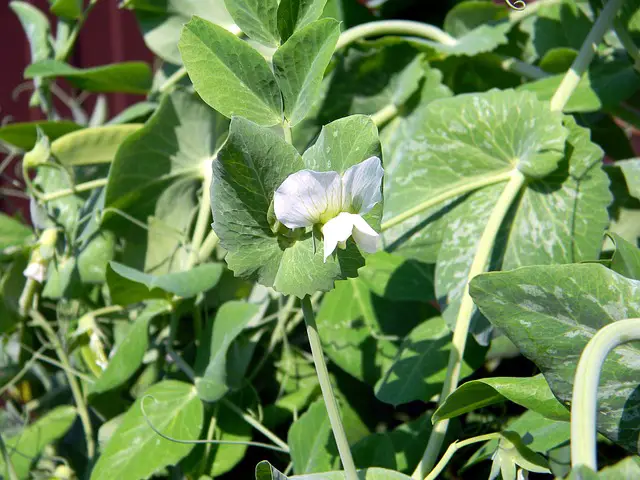
When planting fruit trees, consider companion planting with vegetables. Some vegetables, like beans and peas, can fix nitrogen in the soil, which can benefit fruit trees. Additionally, some vegetables can help deter pests that can damage fruit trees.
7. Maple
Avoid planting fruit trees near maple trees, as they can release chemicals that can inhibit the growth of fruit trees.
8. Asia
Consider planting Asian pear trees, as they are well-suited for Utah’s climate and can be productive even in colder temperatures.
Overall, when planting fruit trees in Utah, it’s important to consider factors like cold hardiness, tree size, cross-pollination, dwarfing rootstock, powerlines, companion planting, and the location of maple trees. By taking these factors into account, you can ensure the success of your fruit trees and enjoy a bountiful harvest.
Frequently Asked Questions
What is the best month to plant trees in Utah?
The best time to plant fruit trees in Utah is during the spring months, typically between March and May. This allows the trees to establish their root systems before the hot summer months arrive.
Is it better to plant fruit trees in the spring or fall?
Spring is generally the best time to plant fruit trees in Utah. This is because the soil is warmer, which helps the trees establish their root systems more quickly.
However, if you miss the spring planting season, you can still plant fruit trees in the fall, but you may need to take extra precautions to protect them from the cold winter weather.
What is the fastest growing fruit tree in Utah?
The fastest growing fruit tree in Utah is the apricot tree. Apricot trees can grow up to 12 feet tall and 10 feet wide in just a few years.
Where can I find a nursery near me to buy fruit trees?
You can find a nursery near you by searching online or in the phone book. Some popular nurseries in Utah include Glover Nursery, Millcreek Gardens, and Western Garden Centers.
What are some recommended fruit trees for Utah’s climate?
Some recommended fruit trees for Utah’s climate include apple, cherry, peach, and plum trees. These trees are adapted to Utah’s climate and can thrive in the state’s unique growing conditions.
Can I plant a Hybrid Norway Maple tree in Utah?
While Hybrid Norway Maple trees are popular in other parts of the country, they are not recommended for planting in Utah. This is because they are not adapted to Utah’s climate and can struggle to survive in the state’s unique growing conditions.
It is best to choose fruit trees that are adapted to Utah’s climate for the best chance of success.

Hey, I’m Lisa and I’ve been an avid gardener for over 30 years. I love writing, talking and living in the garden! Feel free to connect with me on my socials below

